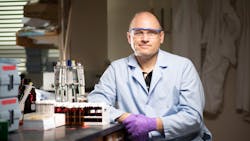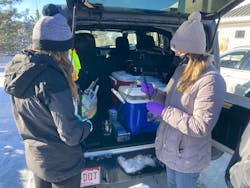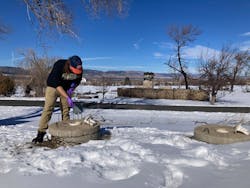Even though these studies are ongoing, the findings have already made it clear that disaster response groups need to test water systems for these VOCs before deeming drinking water safe to use. A study conducted by the California Department of Public Health, published in February, also found evidence in support of these findings.
“I was at a meeting in Colorado, and I could not believe that five years after the Tubbs Fire, we were talking about VOC water contamination like it was common,” Whelton said. “Here we are, at the most destructive wildfire in Colorado’s history, and the state, the Environmental Protection Agency, and others know to test for these VOCs. And then they found them.”
Creating the Playbook
Whelton and other faculty are accustomed to applying their expertise to a range of circumstances around the country and across the world.
For Whelton, this means getting calls to help at the sites of other disasters in addition to wildfires. While assisting Colorado’s recovery effort in January, he simultaneously provided guidance to groups addressing lingering problems with cleaning up a fuel spill in November in Hawaii.
Each of these visits results in a richer collection of questions that Whelton hopes to answer with his research. When a city runs out of treated water and needs to resort to using lake water, as was the case for the Marshall Fire, what are the additional health risks? What are all the chemicals to look for in water contaminated by fuel, such as in Hawaii, and how long do the chemicals remain in the water?
Whelton doesn’t stop at understanding the science of water contamination. Through his studies, he has also made infrastructure and public health recommendations, such as how to improve building codes to prevent wildfires from polluting drinking water and better inform households of water safety issues.
Even though no disaster has the same protocol, Whelton constantly updates the webpage of the Center for Plumbing Safety with “playbooks” that he and others have written for addressing water contamination. The idea of the center, led by Purdue, is to work with other university and industry partners to give public health groups a better starting place on lessons learned from previous disasters.
Underlying problems for disasters to come
“Engineers and scientists are not receiving an education that prepares them to operate in the unknown, which is a disaster-type situation,” he said. “Disasters require you to look for things that are ill-defined and figure out what to do about them. This means you have to think in a way that is not prescribed.”
Last fall, Whelton began teaching a disasters and emergencies class at Purdue specifically for this purpose. Through this course, students learn critical thinking strategies and how to interact with various public health and environmental agencies.
“What I’m focused on doing is not only helping engineers and scientists to become good practicing engineers and scientists, but also training them to methodically evaluate health risks when confronted with something that really flips the world upside down,” Whelton said.





